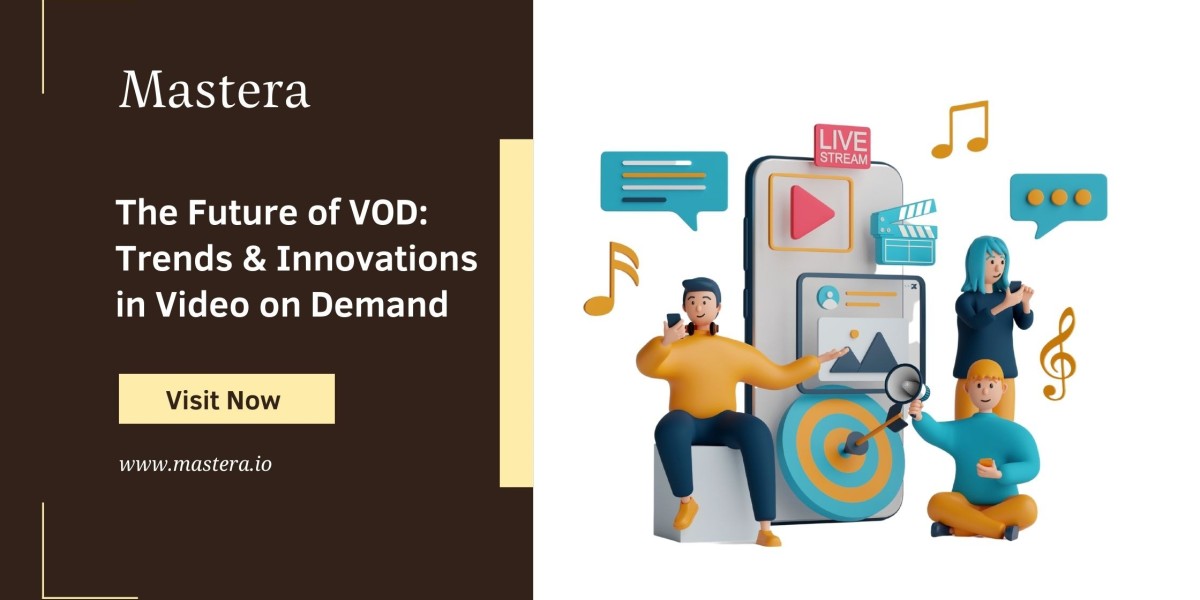The entertainment landscape has undergone a seismic shift in recent years, with the advent of Video On Demand (VOD) platforms reshaping the way we consume content. The convenience of streaming has revolutionized how audiences access movies, TV shows, and other forms of media, challenging traditional distribution models. As technology continues to advance, the future of VOD holds exciting trends and innovations that promise to further transform the industry. In this blog post, we'll explore the key trends and innovations that are shaping the future of VOD.
1. Personalized Content Recommendations
One of the most significant innovations in the VOD industry is the use of sophisticated algorithms to provide personalized content recommendations. As viewers engage with a platform, machine learning algorithms analyze their viewing habits, preferences, and interactions to curate tailored suggestions. This not only enhances user experience but also helps platforms retain viewers and increase engagement. The future will likely see even more advanced AI algorithms that can predict user preferences with greater accuracy, creating a more intuitive and enjoyable viewing experience.
2. Original Content and Exclusives
Original content production has become a cornerstone of many VOD platform. Streaming giants like Netflix, Amazon Prime Video, and Disney+ invest heavily in creating exclusive movies and series that can't be found anywhere else. This strategy not only attracts new subscribers but also fosters viewer loyalty. As the competition intensifies, we can expect to see an increase in high-quality, original content across various genres and languages.
3. Global Expansion and Localization
The future of VOD is undoubtedly global. Platforms are expanding their reach to new international markets, bringing their content to diverse audiences around the world. This trend not only drives subscriber growth but also requires a focus on localization. Subtitles, dubbing, and cultural adaptations are becoming paramount to cater to the preferences of viewers from different regions. The ability to connect with audiences on a global scale presents both challenges and opportunities for VOD platforms.
4. Enhanced User Experience
In the coming years, VOD platforms will continue to invest in enhancing user experience. This includes intuitive interfaces, smoother navigation, and interactive features that keep viewers engaged. Some platforms are already experimenting with interactive storytelling, allowing viewers to influence the plot's direction through their choices. As technology evolves, we can anticipate more immersive experiences, possibly incorporating virtual reality (VR) and augmented reality (AR) elements.
5. Mobile-First and On-the-Go Viewing
The future of VOD is inherently mobile. With the widespread use of smartphones and tablets, viewers are increasingly consuming content on the go. VOD platforms are responding by optimizing their apps for mobile devices, ensuring a seamless and enjoyable experience. Additionally, the integration of download options allows users to save content for offline viewing, catering to travelers and those with limited internet access.
6. Adapting to New Technologies
Technological advancements like 5G connectivity and improved streaming codecs are set to transform the VOD landscape. 5G's high-speed and low-latency capabilities will enable smoother streaming experiences, while better codecs will ensure higher video quality at lower bandwidths. These technologies will not only improve the quality of content delivery but also pave the way for more interactive and immersive content formats.
7. Data-Driven Insights
Data analytics play a crucial role in shaping the future of VOD. Platforms gather data on user behavior, preferences, and engagement patterns to make informed decisions about content creation, recommendation algorithms, and user interface improvements. In the future, these insights will become even more refined, enabling platforms to offer content that resonates with audiences on a granular level.
8. Hybrid Models and Ad Innovation
While subscription-based models dominate the VOD landscape, hybrid models that combine subscriptions with ad-supported content are gaining traction. Ad-supported streaming allows platforms to reach a wider audience, including those who might be hesitant to pay for subscriptions. Innovations in ad targeting and interactivity will likely make ads more relevant and engaging, potentially changing the way viewers perceive advertising.
Conclusion
The future of VOD is a landscape of innovation and evolution. From personalized recommendations driven by AI to the global expansion of content libraries, the industry is poised for transformative changes. As technology continues to advance, viewers can look forward to enhanced user experiences, more interactive storytelling, and an ever-expanding array of content options. The future of VOD is a dynamic fusion of creativity and technology that will shape how we consume entertainment for years to come.



